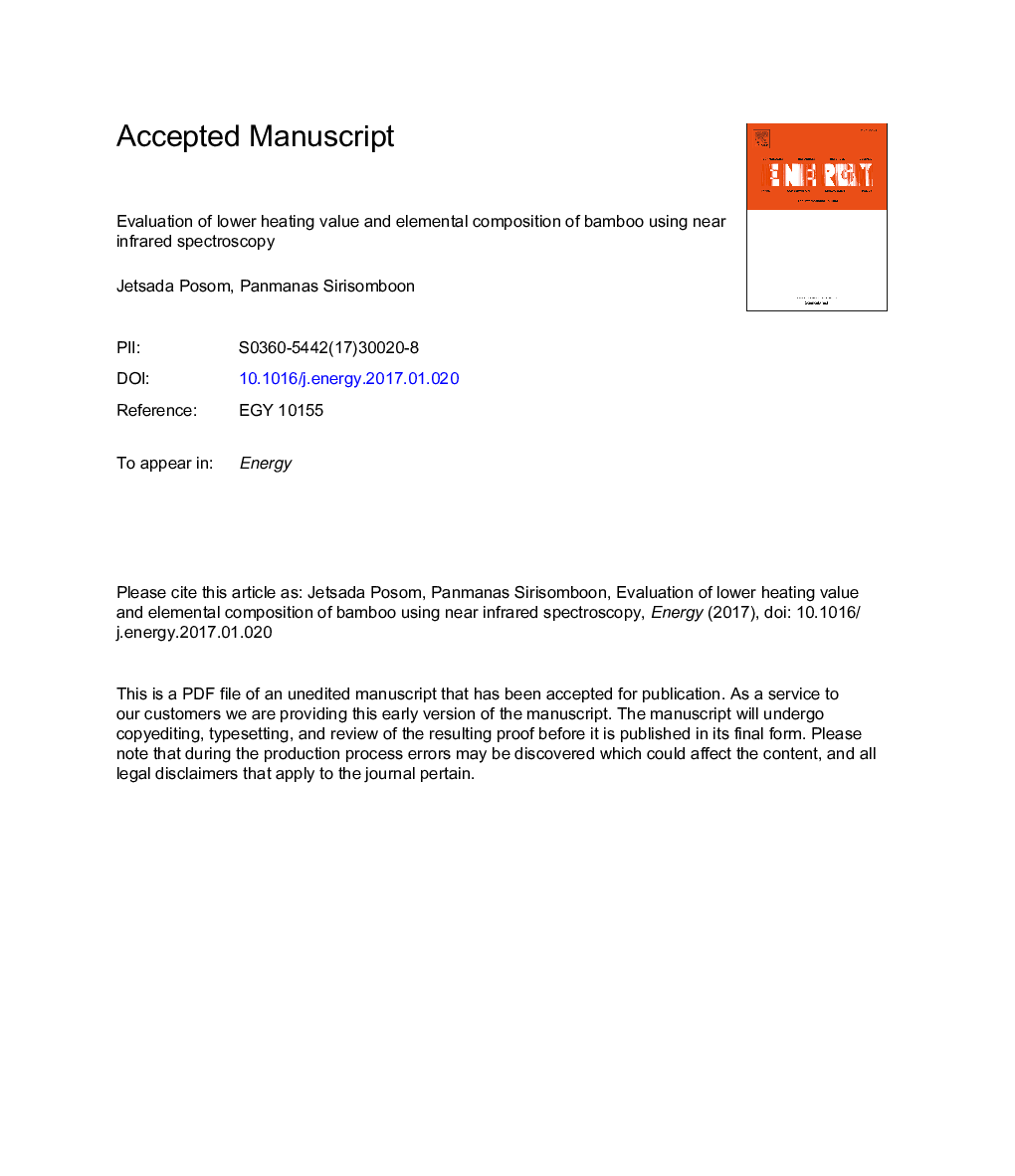| Article ID | Journal | Published Year | Pages | File Type |
|---|---|---|---|---|
| 5476314 | Energy | 2017 | 32 Pages |
Abstract
This study was to optimize models using near infrared spectroscopy for evaluation of lower heating value, carbon, hydrogen, nitrogen, sulfur and oxygen content of bamboo. Partial least squares regression was performed using 80 samples of bamboo where 64 samples was randomly assigned for calibration and 16 samples for validation. The result was that lower heating value and element composition did not depend on circumference size. The models showed the coefficient of determination of validation set and ratio of standard error of prediction to standard deviation of reference value of 0.934 and 3.96 for lower heating value, 0.803 and 2.31 for carbon; 0.856 and 2.65 for hydrogen; 0.973 and 6.6 for nitrogen; 0.785 and 2.19 for sulfur and 0.522 and 1.46 for oxygen, respectively. Models for lower heating value, nitrogen and hydrogen content prediction provided the highest performance, which could be used for most application. The carbon and sulfur models were fair and oxygen model was poor. The result could be a guide for applying in bamboo trading as biomass, in design and operation control of energy conversion and in predicting flue gas flow rate, air requirement, and flue gas compositions in combustion, gasification or pyrolysis.
Related Topics
Physical Sciences and Engineering
Energy
Energy (General)
Authors
Jetsada Posom, Panmanas Sirisomboon,
